| |
|
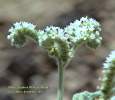 | |
| MaltaWildPlants.com by Stephen Mifsud |

|
| |
|
|
 |  |  |  |
| External Links: |
|
Asparagus stipularis (Grey Asparagus) |
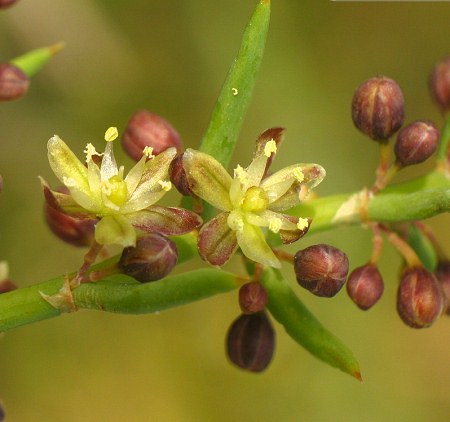
Asparagus stipularis (ASPARAGACEAE.)
Images for this profile are taken from the Maltese Islands after year 2000. |
|
| Nomenclature |
Species name : | Asparagus stipularis Forrsk. | Authority : | Carl von Linne, Sweden, (1707 - 1778) | Synonyms :
(basionym or principal syn.) |
|
Plant Family : | Asparagaceae Juss. (= Liliaceae )
(Asparagus Family) | English name(s) : | Grey Asparagus | Maltese name(s) : | Spraġġ griż | Status for Malta : | Indigenous. Present on the Maltese islands before man | Name Derivation : |
Asparagus: An old Greek name given for peculiar plants with needle-like leaves (cladodes). (Greek origin ); 2 = An old Greek name given for these peculiar plants with needle-like \leaves' (Greek).
stipularis: bearing stipules (leaves subtending the main leaves). (Latin origin ); 2 = Bearing stipules (Latin).
| Remarks : | This is a rather rare plant found only at the margin of the south coastal cliffs of Gozo. This species was doubtfully recorded in Malta by Borg in his flora (published in 1927) as Asparagus aphyllus subsp. horridus from mainland Malta, but these records are somewhat doubtful, possibly nothing more than atypical forms of the common Asparagus aphyllus. However, typical specimens of A. horridus (syn: A. stipularis Forsk.) were first rediscoved, or perhaps, first recorded from Gozo by Mr. Sdravko Vesselinov Lalov and later by Stephen Mifsud in 2007. Numerous specimens occur only from coastal cliffs between Wardija point to Ta'Cenc. |
|
| Morphology and structure |
PLANT STRUCTURE: |
Character | Growth Form | Branching | Surface |
Description | | | |
General
Picture | 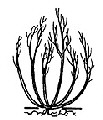 | 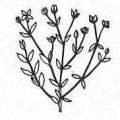 |  |
|
LEAVES: |
Character | Arrangement | Attachment | Venation |
Description | | | |
General
Picture |  |  |  |
| |
Character | Leaf Shape | Leaf Margin | Remarks |
Description | | | The true leaves are reduced to scale-like, non-photosynthetic stipules. The green, needle-like structures that are usually referred to as leaves are actually modified stems called cladodes. |
General
Picture | 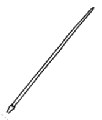 |  |  |
|
FLOWERS: |
Character | Colour | Basic Flower Type | No. of Petals | No. of Sepals |
Description | Yellow & Maroon Tepals are generally yellow-beige with their tips and underside being maroon. | | 1 (ref. to the tepals). | 0 |
General
Picture | | 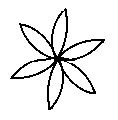 |  |  |
| |
Character | Inflorescence | Description | Ovary | Stamens |
Description | | A small actinomorphic flower composed of 6 narrow and fleshy tepals with a marron-purple tip. Tepals have a central longitudinal furrow. | | |
General
Picture | 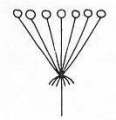 |  | 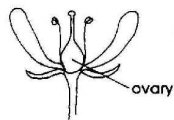 | 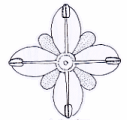 |
| |
Character | Scent | Average Flower Size | Pollen Colour | Other Notes |
Description | YES Sweet scent, which may be missed in wind. | 7-8 mm across | Pale Yellow | - |
|
SEEDS: |
Character | No. Per Fruit | Shape | Size | Colour |
Description | 1-6 (Usually only 1 is found). | Spherical | 3-4mm | Black |
General
Picture |  |  |  |  |
|
FRUIT AND OTHER BOTANICAL DATA: |
Character | Fruit Type | Colour of Fruit | Subterranean Parts | Other Notes |
Description | | Dark Purple | | - |
General
Picture |  |  | 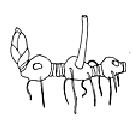 |  |
|
|
| Plant description and characters | |
Life Cycle: | Perennial. |
Growth Form: | Nano-Phanerophyte (small trees to large shrubs, usually <5 m) |
Habitat: | High rocky coastal cliffs especially on Globigerina Limestone flanks in the south and western coast of Gozo. |
Frequency: | Rare |
Localities in Malta: | Rare, but locally frequent at a stretch of 5km at the south coast of Gozo. |
Plant Height: | A rather low sub-prostrate plant (c. 30cm from ground level) but its trailing branches can extend to 1m in length. |
| Feb-Apr |
Protection in Malta: | Not legally protected till the last update of this website (2/Mar/2022) |
Red List 1989: | Not listed in the Red Data Book of the Maltese Islands |
Poison: | |
This plant has the typical growth habit of many Asparagaceae, hence forming long branches from underground rhizomes which becomes prostrate to the ground or grow up vertically if they find support (eg: bushes or walls). Each of the branches are multi-branching and can take the form a low sub-shrub.
The new branch is initially in the form of a soft shoot which is a flexible, elongated structure and the edible part of the plant. Shoots start growing by the end of Winter in Malta. First the shoot forms hyaline, papery, sessile leaves only about 5mm long and triangular in shape. These have little or no photosynthetic function. From their axil grows a green branch which gives rise to several needle-shaped structures called cladodes. These are botacinally considered as modified stems with photosynthetic function, while for the amateur, they might look as needle-shaped leaves.
 The cladodes of Asparagus horridus are solitary (especially at the upper parts of the branch), and the largest ones often reach 3 or 4cm in length. They are thick (up to 2.5mm), slightly curved, stiff, slightly flattened structures. The cladodes of this species offer protection from herbivores by having a stiff, sharp-pointed bristle (or spine) at their tip. The inconspicuous, papery leaves looks like stipules in a developped branch. They are found appressed to the stem and most probably functionless. The cladodes of Asparagus horridus are solitary (especially at the upper parts of the branch), and the largest ones often reach 3 or 4cm in length. They are thick (up to 2.5mm), slightly curved, stiff, slightly flattened structures. The cladodes of this species offer protection from herbivores by having a stiff, sharp-pointed bristle (or spine) at their tip. The inconspicuous, papery leaves looks like stipules in a developped branch. They are found appressed to the stem and most probably functionless.
 By the end of Winter, maroon flowering buds are formed. They are arranged as umbel-like inflorescences which grow from the axils of cladodes. They are few-flowered, usually in pairs or threes but collectively, there are plenty of flowers per branch. Not all branches form flowers, and those which do looks to have smaller (=younger?) cladodes. Flowers have a very short pedicel (2mm) which on a closer examination, it reveals to have a joint (swelling) at the lower part. By the end of Winter, maroon flowering buds are formed. They are arranged as umbel-like inflorescences which grow from the axils of cladodes. They are few-flowered, usually in pairs or threes but collectively, there are plenty of flowers per branch. Not all branches form flowers, and those which do looks to have smaller (=younger?) cladodes. Flowers have a very short pedicel (2mm) which on a closer examination, it reveals to have a joint (swelling) at the lower part.
The actinomorphic flowers consist of 6 fleshy tepals (3 sepals + 3 petals) which are about 3mm long each. The tepals have a 'dirty' yellow colour with their tips and underside being maroon. The flowers emit a fragrant smell which can be missed in windy days. The male reproductive part consist of 6 erect stamens with stout filaments and yellow anthers. The female part is a central superior ovary divided into 3 locules with a short stigma and slightly swollen style.
The fruit is an indehiscent berry which has a distinctive bluish-black colour compared to the other native species of asparagus which have green, red or black berries. The berries have a spherical structure, about 6 mm across, and hold small, hard, black seeds with a smooth, glossy surface. There is 1-3 seeds per fruit, but often only 1 is present.
|
|
| Information, uses and other details |
Nativity and distribution
The distributional (native) range of this plant is shown in the list below: [WWW-26]
Northern Africa: Algeria (n.); Egypt; Libya (n.); Morocco; Tunisia
Western Asia: Cyprus; Israel; Jordan; Syria
Europe: Greece (incl. Crete); Italy - Sardinia, Sicily, Portugal; Spain (incl. Baleares)
The distribution range in Europe according to reference [WWW-158] is : the Isles of Baleares, Crete, Greece, Spain, Italy, Portugal, Sardegna, Sicily.
Main differences between Asparagus aphyllus and Asparagus horridus
The table below show he main differences between A. horridus, and the common A. aphyllus [SM]
| Feature |
A. aphyllus |
A. horridus |
| Flowering season |
Spring (Mar-May) |
Autumn (Sep-Nov) |
| Apical cladodes |
Borne in clusters (>6) |
Solitary or up to 5 |
| Normal cladodes length |
1-2cm |
2-4cm |
| Colour at the underside of the tepals |
Yellow |
Reddish brown |
| Colour of the berries |
Black |
Bluish black |
| Stipules |
Small, unconspicuous |
Well developed, semi-hyaline structures. |
Edible uses
Young shoots are edible [177]. It is likely that they are cooked and used like asparagus [KF].Young shoots of asparagus are collected from the wild and eaten as vegetables. They are rich in potassium phosphate, calcium, manganese, cobolt compounds and iron, making them excellent is cases of anaemia. However, asparagus can cause insomnia if eaten in large quantities. [WWW-177]
The young shoots of Asparagus acutifolius, Asparagus horridus and the young leaves of Silene vulgaris, which are the most typical examples in both sites studied, are cut, fried and mixed with the eggs to make the omelette. [395]
Medicinal Uses
The plant, especially the young stems, contain asparagine used as a diuretic in medicine and also in cases of arrhythmia and other heart complaints. It is also useful for the treatment of bronchitis, respiratory infections and rheumatism. [WWW-177]
The plant has the following medicinal properties according to reference: [WWW-66] .
| Headache |
Used to treat headache |
| Diaphoretic |
Drug used to produce perspiration [WWW-32] |
| Piles |
Used to treat pain caused by venous swelling at or inside the anal sphincter [WWW-32] |
Both the fresh roots and shoots of many species of Asparagus act as diuretics, communicating an unpleasant odor to the urine. A syrup is prepared by adding sugar to the expressed juice, deprived of its albumen by heating and straining, or an extract may be prepared from them by evaporation of the juice to a semi-solid condition. The dose of the former is from 2 to 3 fluid ounces; of the latter, from 30 to 60 grains. They are said to cause copious diuresis, and are reputed very beneficial in repressing undue excitement of the circulatory system, and have been used with advantage in enlargement of the heart, dropsy, etc. It is said that asparagus shoots may produce irritation of the urinary mucous surfaces, attended with a morbid mucorrhoea. [WWW-09]
Notes on Aspargine
Asparagine is one of the 20 most common natural amino acids on Earth. It has carboxamide as the side chain's functional group. It is considered a non-essential amino acid.
Its three-letter abbreviation is Asn, and its one-letter abbreviation is N. A three-letter designation for either asparagine or aspartic acid is Asx (one-letter abbreviation: B).
A reaction between asparagine and reducing sugars or reactive carbonyls produces acrylamide (acrylic amide) in food when heated to sufficient temperature, i.e. baking. These occur primarily in baked goods such as french fries, potato chips, and roasted coffee.
Asparagine was first isolated in 1806 from asparagus juice, in which it is abundant--hence its name--becoming the first amino acid to be isolated. The smell observed in the urine of individuals after their consumption of asparagus is attributed to a byproduct of the metabolic breakdown of asparagine, asparagine-amino-succinic-acid monoamide. (However, some scientists disagree and implicate other substances in the smell, especially methanethiol). Oddly, some people are not able to detect the odour of the compound.
[WWW-60]
Propagation
Pre-soak seeds for 12 hours in warm water and then sow in spring or as soon as the seed is ripe in early autumn in a greenhouse. It usually germinates in 3 - 6 weeks at 25° C [134]. Prick out the seedlings into individual pots when they are large enough to handle and grow them on in a sunny position in the greenhouse for their first winter. Plant them out into their permanent positions in late spring or early summer.Division in early spring as the plant comes into growth. [KF]
Scent
The flowers are sweetly scented, diffusing their scent about the garden. [KF]
Personal Observations
Records of A. horridus on the Maltese islands.
This is a rare plant that was rediscovered after several decades. Its was last recorded by Borg in 1927 (as Asparagus aphyllus subsp. stipularis) and since then never reconfirmed, and consequently, it was taught that it had become extinct. More probably it could be a case that the records by Borg was only atypical forms of Asparagus aphyllus. Mr. Sdravko Lalov and later Stephen Mifsud, found again this species in Gozo at the coastal cliffs of Ta' Cenc, Seguna, Sanap, Xlendi and Wardija.
[SM]
|
|
| | |

